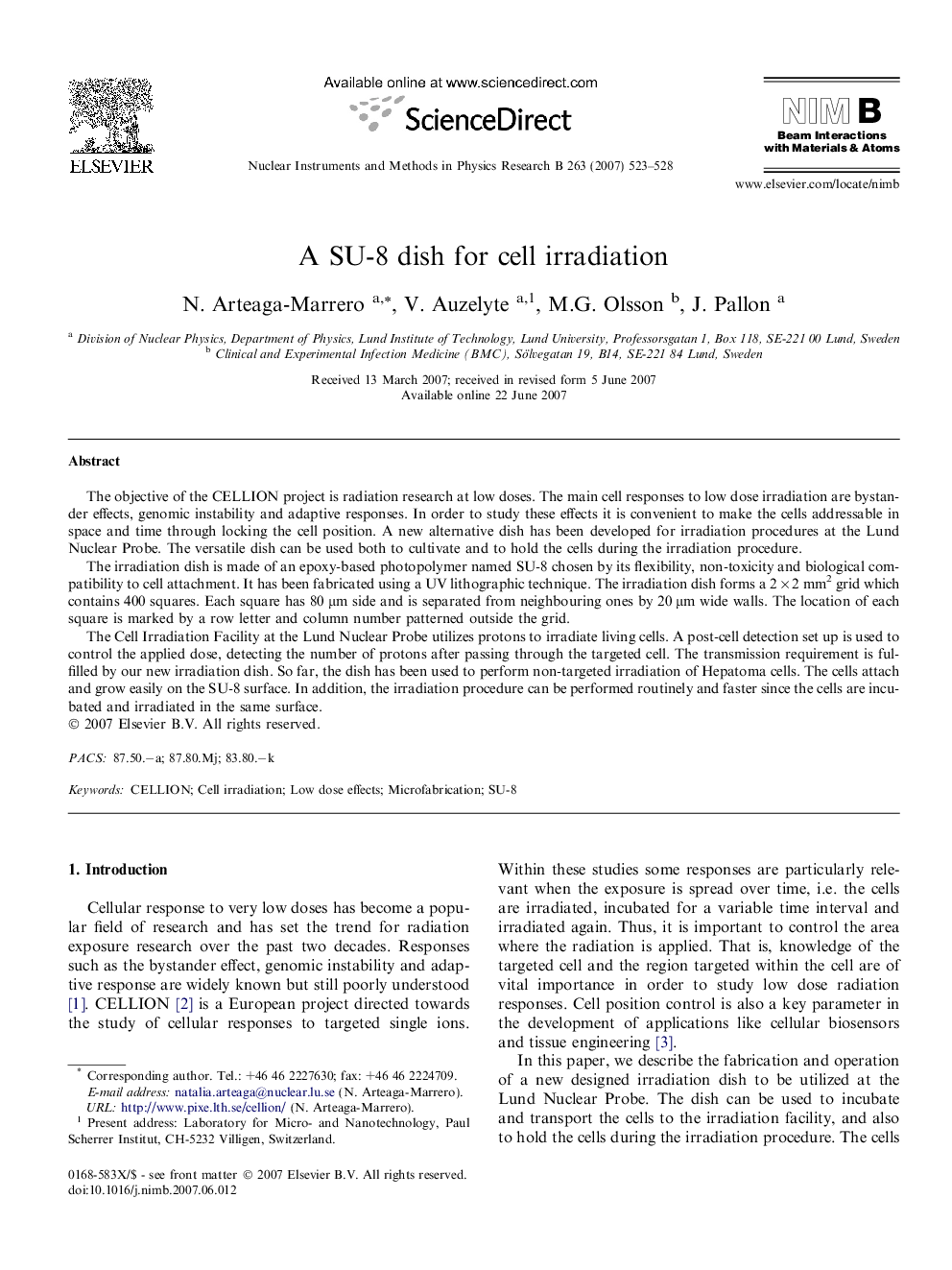| Article ID | Journal | Published Year | Pages | File Type |
|---|---|---|---|---|
| 1686582 | Nuclear Instruments and Methods in Physics Research Section B: Beam Interactions with Materials and Atoms | 2007 | 6 Pages |
The objective of the CELLION project is radiation research at low doses. The main cell responses to low dose irradiation are bystander effects, genomic instability and adaptive responses. In order to study these effects it is convenient to make the cells addressable in space and time through locking the cell position. A new alternative dish has been developed for irradiation procedures at the Lund Nuclear Probe. The versatile dish can be used both to cultivate and to hold the cells during the irradiation procedure.The irradiation dish is made of an epoxy-based photopolymer named SU-8 chosen by its flexibility, non-toxicity and biological compatibility to cell attachment. It has been fabricated using a UV lithographic technique. The irradiation dish forms a 2 × 2 mm2 grid which contains 400 squares. Each square has 80 μm side and is separated from neighbouring ones by 20 μm wide walls. The location of each square is marked by a row letter and column number patterned outside the grid.The Cell Irradiation Facility at the Lund Nuclear Probe utilizes protons to irradiate living cells. A post-cell detection set up is used to control the applied dose, detecting the number of protons after passing through the targeted cell. The transmission requirement is fulfilled by our new irradiation dish. So far, the dish has been used to perform non-targeted irradiation of Hepatoma cells. The cells attach and grow easily on the SU-8 surface. In addition, the irradiation procedure can be performed routinely and faster since the cells are incubated and irradiated in the same surface.
